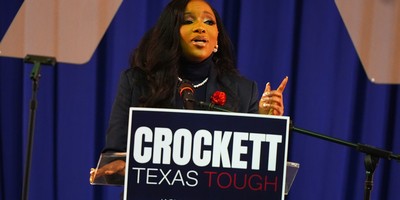Classic songs from years past are sometimes referred to as "golden oldies." There are political fallacies that have been around for a long time as well. These might be called brass oldies. It certainly takes a lot of brass to keep repeating fallacies that were refuted long ago.
One of these brass oldies is a phrase that has been a perennial favorite of the left, "tax cuts for the rich." How long ago was this refuted? More than 80 years ago, the "tax cuts for the rich" argument was refuted, both in theory and in practice, by Andrew Mellon, who was Secretary of the Treasury in the 1920s.
When Mellon took office, there was a large national debt, the economy was stagnating, and tax rates were high, though the tax revenues were still not enough to cover government expenditures. What was Mellon's prescription for getting out of this mess? A series of major cuts in the tax rates!
Then as now, there were people who failed to make the distinction between tax rates and tax revenues. Mellon said, "It seems difficult for some to understand that high rates of taxation do not necessarily mean large revenue for the Government, and that more revenue may often be obtained by lower rates."
How can that be? Because taxpayers change their behavior according to what the tax rates are. When one of the Rockefellers died, Mellon discovered that his estate included $44 million in tax-exempt bonds, compared to $7 million in Standard Oil securities, even though Standard Oil was the source of the
Rockefeller fortune.
For the country as a whole, the amount of money tied up in tax-exempt securities was estimated to be three times as large as the federal government's expenditures and more than half as large as the national debt.
Recommended
In short, huge amounts of money were not being invested in productive capacity, such as factories or power plants, but was instead being made available for local political boondoggles, because this money was put into tax-exempt state and local bonds.
When tax rates are reduced, investors have incentives to take their money out of tax shelters and put it into the private economy, creating higher returns for themselves and more production in the economy. Andrew Mellon understood this then, even though many in politics and the media seem not to understand it now.
Mellon was able to persuade Congress to lower the tax rates by large amounts. The percentage by which tax rates were lowered was greater at the lower income levels, but the total amount of money saved by taxpayers was of course greater on the part of people with higher incomes, who were paying much higher tax rates on those incomes.
Between 1921 and 1929, tax rates in the top brackets were cut from 73 percent to 24 percent. In other words, these were what the left likes to call "tax cuts for the rich."
What happened to federal revenues from income taxes over this same span of time? Income tax revenues rose by more than 30 percent. What happened to the economy? Jobs increased, output rose, the unemployment rate fell and incomes rose. Because economic activity increased, the government received more income tax revenues. In short, these were tax cuts for the economy, even if the left likes to call them "tax cuts for the rich."
This was not the only time that things like this happened, nor was Andrew Mellon the only one who advocated tax rate cuts in order to increase tax revenues. John Maynard Keynes pointed out in 1933 that lowering the tax rates can increase tax revenues, if the tax rates are so high as to discourage economic activity.
President John F. Kennedy made the same argument in the 1960s -- and tax revenues increased after the tax rates were cut during his administration. The same thing happened under Ronald Reagan during the 1980s. And it happened again under George W. Bush, whose tax rate cuts are scheduled to expire next January.
The rich actually paid more total taxes, and a higher percentage of all taxes, after the Bush tax rate cuts, because their incomes were rising with the rising economy.
Do the people who keep repeating the catch phrase, "tax cuts for the rich" not know this? Or are they depending on your not knowing it?

























Join the conversation as a VIP Member